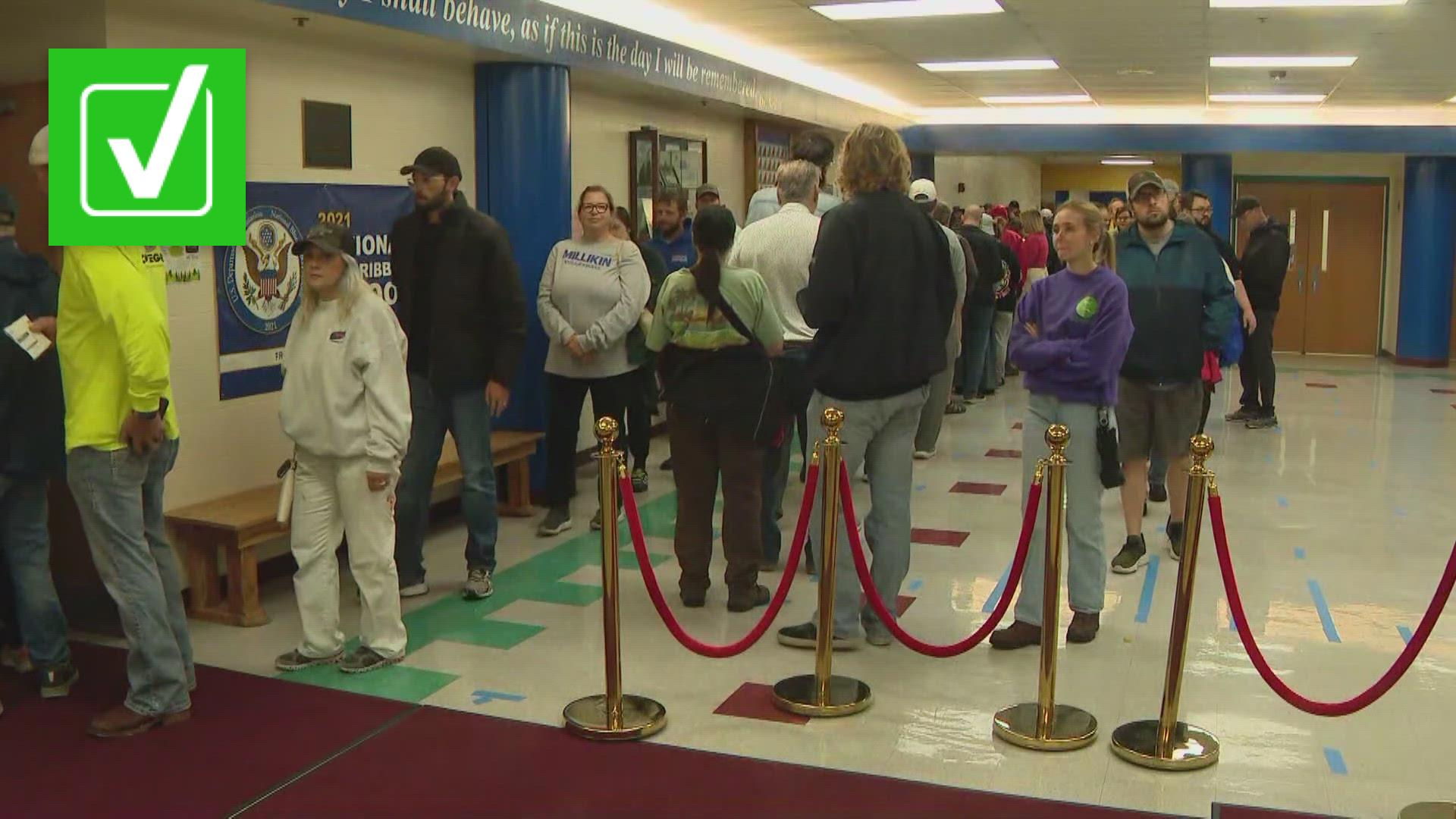JEFFERSON CITY, Mo. — The Missouri General Assembly will have new faces next year, but the partisan alignment will likely remain unchanged as Republicans appear to have retained their two-thirds supermajority in both chambers.
The question of which party would have the majority in the General Assembly was never in doubt in this election. The goal for Democrats was to gain seats in both chambers — something they have not done since 2006 — and to break the two-thirds supermajority the GOP has enjoyed since the 2012 election.
With the only incomplete results in close races in Greene County, it appears Democrats have fallen far short of that goal.
Shortly before 11:30 p.m. Tuesday, unofficial results showed that each party had gained a seat held by the other in each chamber, but no other changes. If that result holds, Republicans will retain 111 seats in the Missouri House and 23 seats in the Missouri Senate.
The only incumbent Democrat to lose a House seat was state Rep. Jamie Johnson of Kansas City, who represents the 12th District in Platte County. Johnson, the first Black lawmaker to represent the district, was elected in 2022 and was defeated Tuesday by Republican Mike Jones, a veteran and small business owner.
Another freshman lawmaker, state Rep. Chris Lonsdale of Liberty, was the only incumbent Republican to lose a House seat. Lonsdale was defeated by Democrat Marty Jacobs, a retired educator.
In the state Senate, Republicans and Democrats traded open seats.
Democrats picked up the 19th District in central Missouri, where former state Rep. Stephen Webber of Columbia will replace outgoing Senate President Pro Tem Caleb Rowden. Webber defeated James Coyne, who took on the race after the withdrawal of former state Rep. Chuck Basye.
In the Independence area, Republican Joe Nicola won his first race after several tries, including a run for Congress. Nicola will take the seat previously held by Democrat John Rizzo, who was term-limited and is now executive director of the Jackson County Sports Complex Authority.
Nicola defeated Democratic state Rep. Robert Sauls.
The status-quo election result is the worst showing for Democrats in the Missouri House in five elections. Democrats won 52 seats in the House in 2022, a gain of three in the fourth consecutive election where the party flipped more seats than it lost.
At publication time, there were a handful of races yet to be decided that could change the result. In the 100th District in St. Louis County, incumbent Republican state Rep. Philip Oehlerking held a 119-vote lead over Democrat Colin Lovett in a rematch of their 2022 race.
And in Greene County, results were incomplete but the incumbent party held the edge in three races where about half the vote was yet to be tallied.
Democrats had 10 seats in the state Senate after the 2022 election and have not gained a seat in the upper chamber since 2018. And they had several candidates who raised more than most of the party’s statewide contenders.
Retired businessman Joe Pereles spent almost $900,000 on television ads in the 15th District of St. Louis County, and a PAC supporting him spent $155,000 more in an effort to take the Republican district. He was defeated by former state Rep. David Gregory, who depleted his campaign account winning the primary but was backed by about $425,000 in television spending by the GOP’s Senate PAC, the Missouri Senate Campaign Committee.
Sauls was defeated despite a $325,000 television campaign in the Kansas City area.
Both Pereles and Sauls were defeated despite endorsements from the usually Republican-leaning Missouri Chamber of Commerce and Industry and outspending their opponents.
This year’s election is the second using maps drawn after the 2020 census. That year, voters approved changes to the process that means most legislative districts no longer cross county lines except to have enough population for a full district.
This story from the Missouri Independent is published on KSDK.com under the Creative Commons license. The Missouri Independent is a nonpartisan, nonprofit news organization covering state government, politics and policy.



